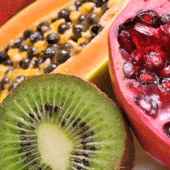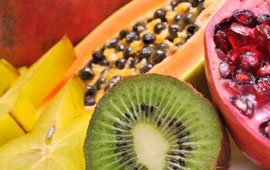 Three exotic fruit alternatives to add some flavor to your weight loss diet
Three exotic fruit alternatives to add some flavor to your weight loss diet
They come in every color of the rainbow, in every shape you can imagine. They’re sour, sweet and savory with tastes varied and diverse enough to reflect their vast multinational origins. Some even have a history that stretches back to the dawn of man.
The produce section of your local grocery store likely carries a staggering array of different fruits, but about 80 percent of Americans fall short of the recommended two cups of fruit per day. It can be easy to get apathetic about the usual suspects (who really wants to eat an apple a day?) but with no shortage of options, there’s no good excuse to suffer from fruit fatigue.
Rich in essential vitamins and fiber and capable of improving cardiovascular health and memory, fruit is an important part of any diet, especially when focused on weight loss. After a bariatric procedure like LAP-BAND in Dallas, balancing your diet is more important than ever. Here are some places to get the fruit you need beyond just apples and oranges.
- Kiwi. With even more vitamin C than the same amount of orange, the succulent little kiwifruit offers a tangy and refreshing flavor and a delicate, creamy consistency. First grown in southern China, and still that country’s national fruit, the kiwi is now grown all over the world and available in produce sections year round. Also a great source of dietary fiber, kiwi makes for a great snack or fruit salad addition.
- Papaya. Rich in vitamins C and A, the papaya is a native of Central and South America and can grow up to 20 inches long, though the ones you’ll find in the supermarket will likely only reach about half a foot. They develop a vibrant orange color as they ripen and contain tons of small, black seeds that can be eaten, though their taste is significantly bitterer than the fruit’s sweet flesh. Papayas are excellent for digestive health, as they contain more fiber than the average apple—about 20 percent of daily intake—and an enzyme called papain that helps your body digest proteins.
- Pomegranate. Rich in antioxidants, the pomegranate has a history of cultivation that spans more than 5,000 years and more ancient societies than an introductory anthropology course. Though sometimes difficult to find in stores, the pomegranate is chock full of vitamin C, fiber, potassium and folic acid. It is getting increasing attention as a health food due to the effects of its high levels of antioxidants, which can help maintain blood flow and reduce levels of the body’s bad cholesterol. You can eat the seeds or extract the juice, but take care when cutting open a pomegranate—the fruit’s blood-red juice can easily stain just about anything.


